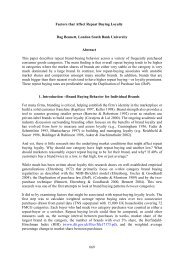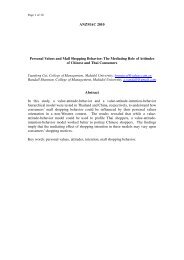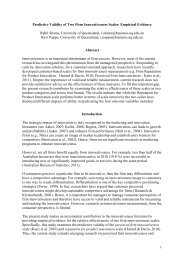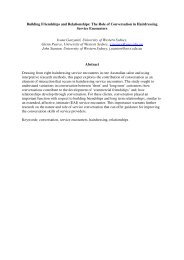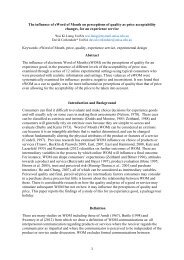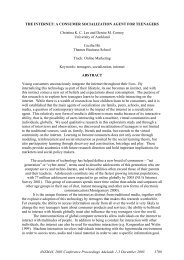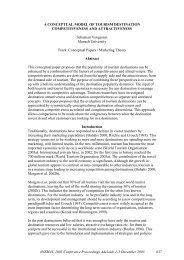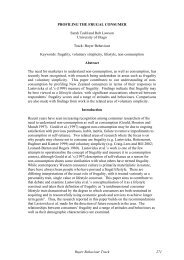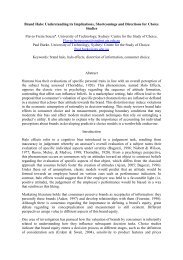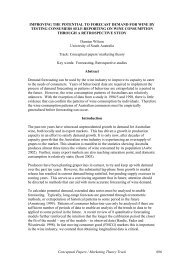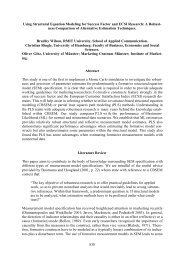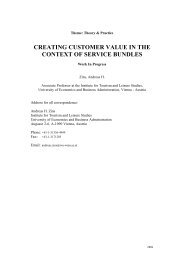amj Australasian Marketing Journal - ANZMAC
amj Australasian Marketing Journal - ANZMAC
amj Australasian Marketing Journal - ANZMAC
Create successful ePaper yourself
Turn your PDF publications into a flip-book with our unique Google optimized e-Paper software.
Fashion Clothing Involvement<br />
Gender<br />
Age<br />
H2a<br />
H1b<br />
H1a<br />
H2b<br />
Selfmonitoring<br />
H2c<br />
Materialism<br />
H4b<br />
H3b<br />
H3a<br />
2000b) and materialism (Richins & Dawson, 1992) and items<br />
tapping image portrayal-image orientation, hedonic and functional<br />
usage of fashion clothing consumption based on the<br />
motive social approval, sensory pleasure and function based<br />
on the work of Rossiter and Percy (1997). Being taken from<br />
published research these constructs are therefore considered<br />
to have construct validity. The motives items were tapped via<br />
5 items for concern for image and image others have of the<br />
individual (symbolic). Four items tapped the hedonic element<br />
of the product and pleasure derived personally from fashion<br />
clothing (hedonic). Also 2 items tapped functional attributes<br />
of fashion clothing (functional). All measures were based on<br />
a bipolar six point Likert-type format, from strongly agree to<br />
strongly disagree.<br />
The survey was administered via the mail to a sample of 900<br />
consumers (students). Respondents were randomly chosen<br />
50 <strong>Australasian</strong> <strong>Marketing</strong> <strong>Journal</strong> 9 (1), 2001<br />
H4a<br />
H4d<br />
H4c<br />
Motives<br />
H4e<br />
Fashion<br />
clothing<br />
involvement<br />
Figure 1: Hypothesised model of relationships<br />
Fashion<br />
clothing product<br />
involvement<br />
Fashion<br />
clothing purchase<br />
decision<br />
involvement<br />
from a university database of students at a major Australian<br />
university using every tenth name. Four Hundred and Fifty<br />
questionnaires were returned, from 209 males and 241<br />
females. A 50% response rate was achieved, with 53.6% of<br />
respondents being females and 46.4% being males and ages<br />
ranged from 18 to 76, with a mean age of 35.<br />
As the purpose of the study was to examine relationship<br />
between constructs rather than generalisations to specific<br />
populations, students were deemed acceptable (Bloch,<br />
Sherrell and Ridgway, 1986; Calder, Philips and Tybout,<br />
1981), students had also been used by Browne and<br />
Kaldenberg (1997) supporting their use in this study.<br />
6. Results<br />
The initial discussion presented focuses on the analysis of the<br />
properties of the scales used (product & purchase decision



